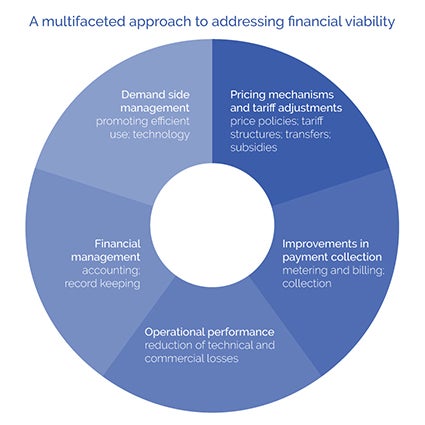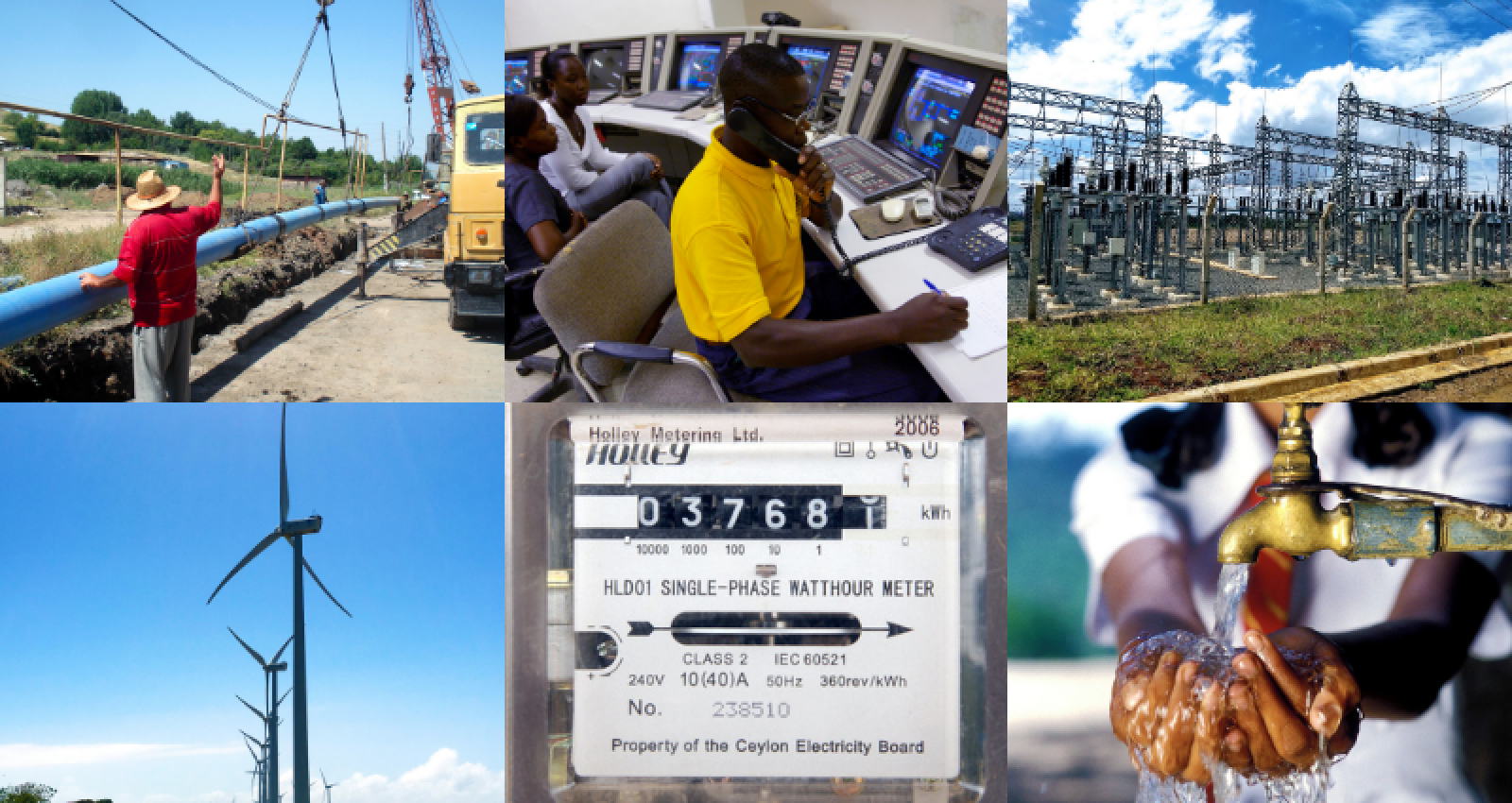Utility reform has never been more important. The COVID-19 pandemic has badly impacted utilities across the world. Many utilities are now under intensified financial stress due to budget reductions and a loss of revenue, resulting from a sudden drop in collection rates, suspension of billing, and tariff adjustment in some countries. This, in turn, has made it more challenging to ensure continued service delivery.
IEG recently published the synthesis Public Utility Reform: What lessons can we learn from IEG evaluations in the energy and water sectors?, a compilation of evidence of what worked and what did not work, and why, in World Bank support of public utility reforms in the energy and water sectors in its client countries. Its findings are even more relevant in the context of uncertainty about medium-to long-term outlook for recovery from the challenges imposed by COVID-19.
Well before COVID-19, financial viability and institutional accountability were the two main challenges faced by public utilities in improving service outcomes in the energy and water sectors. Now, the effectiveness of utilities in these two fundamental areas remain critical for ensuring the quality and sustainability of these vital basic services during a post-pandemic recovery.
Financial Viability
IEG analysis reveals a range of World Bank interventions geared to support financial viability in both the energy and water sectors.

Recovering the cost of service is at the core of sector reform. Across both water and energy sectors, inadequate cost recovery is a key driver of financial underperformance. Poor bill collection and operational inefficiencies (including excessive network losses) also have a significant role. IEG finds that, while tariff reform is fundamental, improving operational efficiency of service providers is crucial for financial sustainability. The cumulative evidence indicates that when inefficiencies result in high-cost service provision, improving utilities’ operational efficiency should precede or go hand-in-hand with tariff increases. Additionally, the gains from reductions in technical and commercial losses, improvements in payment collection, financial management, and demand side management proved easier to sustain once implemented.
Evidence points to the importance of strengthening utilities’ commercial orientation, which is vital for the provision of adequate and reliable services, regardless of whether the service delivery agents are under public or private ownership. Utilities that emphasize cost control, customer orientation, and responsiveness to incentives are more likely to make meaningful progress. For example, World Bank operations in Vietnam and Turkey helped improve financial sustainability of electric power utilities through technical support and policy reforms, incrementally implementing tariff and market regulations in the electricity sector.
Utilities may need more financial support as they weather the economic crisis triggered by the pandemic. However, as the recently published IEG evaluation State your Business! An evaluation of World Bank Group support to the Reform of State-Owned Enterprises cautions, temporary subsidies introduced at the time of COVID-19 can pose “policy traps” supported by powerful vested interests, which can be hard to reverse once the crisis is over.
Institutional Accountability
Creating the right accountability and incentives is essential for effective service delivery. In both energy and water sectors, institutional accountability is critically tied to performance. Sustaining reforms requires competent institutions and strong administrative capacity. Improved performance can be a first step towards attracting private sector investment.
Strengthening sector planning, utility management, capacity and skills, can improve sector outcomes. A solid sectoral fiscal, financial, and regulatory framework also defines and sets the context for leveraging markets and the private sector to support service delivery.
There are multiple institutional pathways that could lay the foundation for improved and sustained service delivery. There is no single model but there are certain principles that work.
In energy, improved accountability and regulatory performance drive sector outcomes. Good practices on corporate governance and regulation enable the sector environment to leverage markets and the private sector. In Rwanda, for example, the World Bank (through budget support operations), the International Finance Corporation (through advisory services), and Public-Private Infrastructure Advisory Facility (PPIAF) helped the government develop sector regulatory structures and separate water and electricity utilities to improve governance, accountability and transparency. Institutional and policy reforms transformed the Rwanda Energy Group into a commercially operated state-owned enterprise and helped attract private finance.
In water, improved capacity, incentives, and transparent rules on accessing funds can ensure good sector outcomes. Good financial and operational data systems are also important. In Peru, the utility Sedapal radically changed its corporate management approach and work culture, including adopting a new performance-based compensation and incentive system driven by reaching results targets. IEG’s field-based assessment confirmed a steady improvement in access coverage, basic service parameters, and operational and financial performance.
Political and social challenges
In both sectors, utilities' operations and management are closely linked to the political economy in which they operate. Political economy considerations can inform specific design elements, including choices of programmatic instruments vs. standalone operations, or front-loading vs. back-loading of important reform actions in a programmatic series. Experience shows that support to operations needs to match the time frame in which effective government action can reasonably take place. The World Bank’s experience shows that complementary interventions and sustained support contribute positively to favorable and enduring results.
Regarding tariff reform, the institutional, political, and social challenges are considerable. Public opposition to tariff reforms reflects a lack of confidence in public service improvements and that vulnerable groups will be protected. At the same time, it is important to address potentially negative distributional consequences of reforms through such measures as differentiated tariffs and targeted assistance programs. Their success depends on the government’s ability to reach vulnerable households through fiscally sustainable programs.










Add new comment